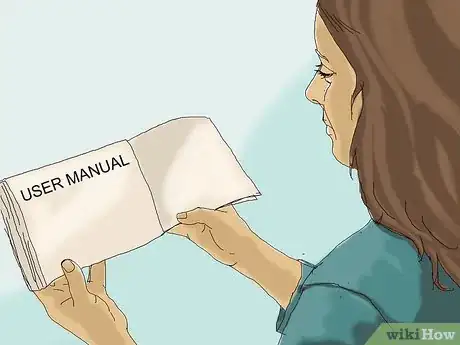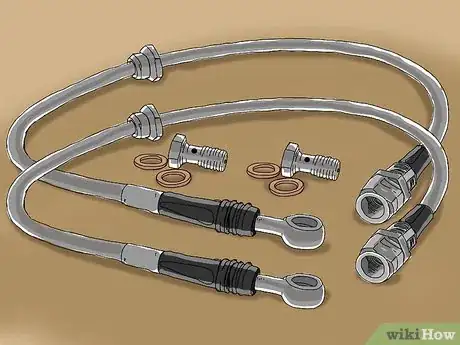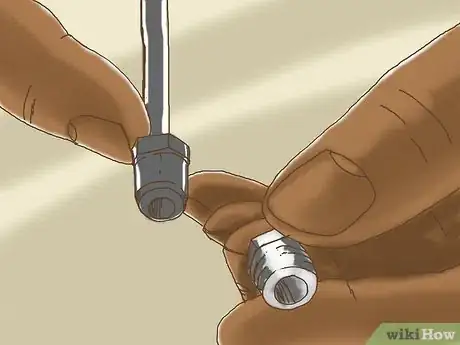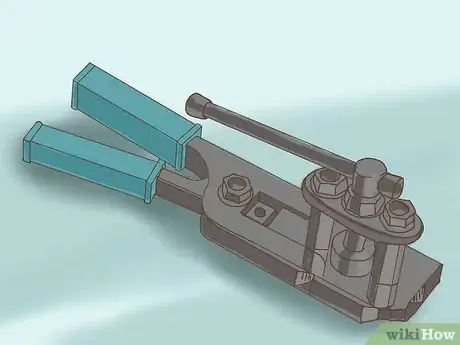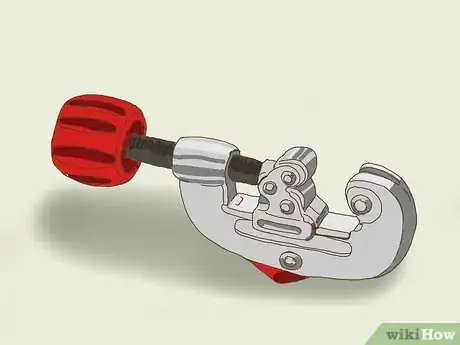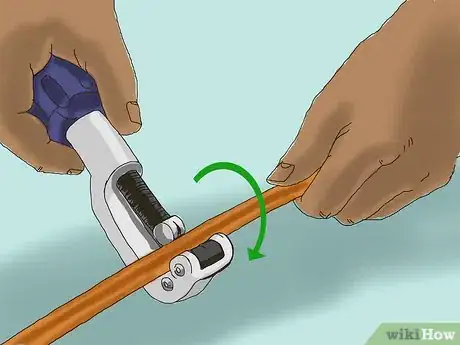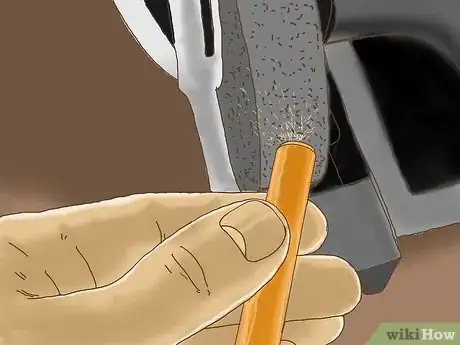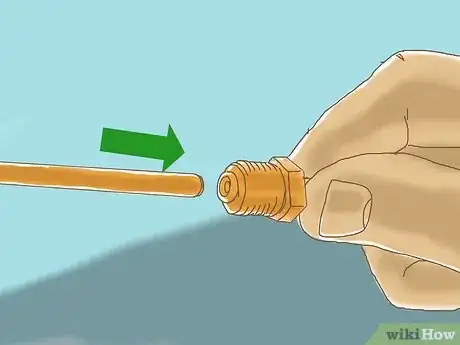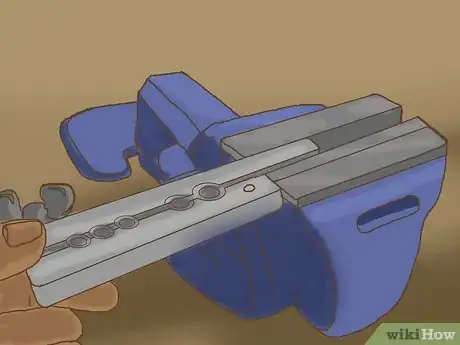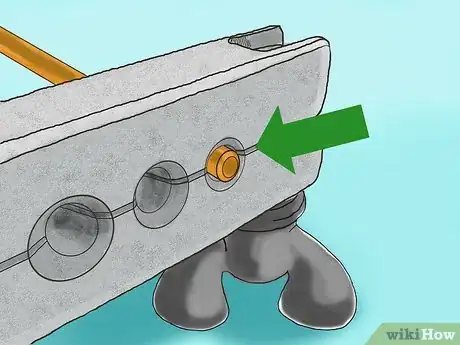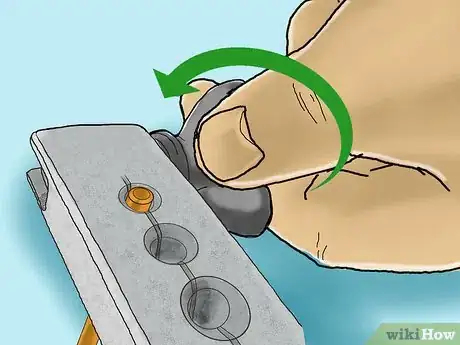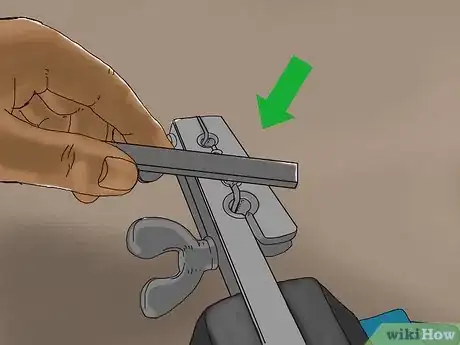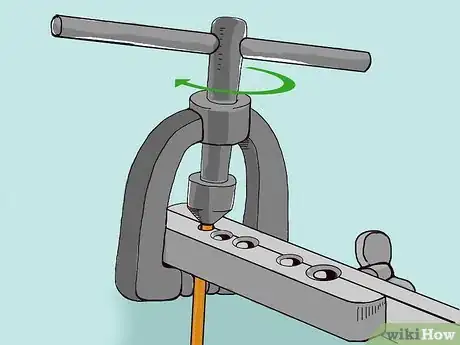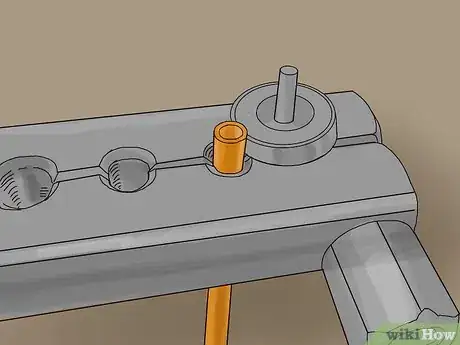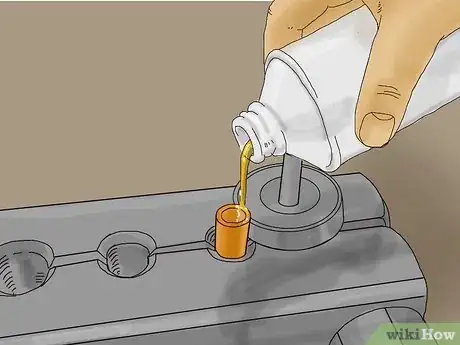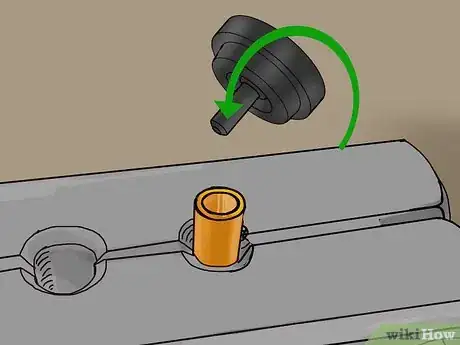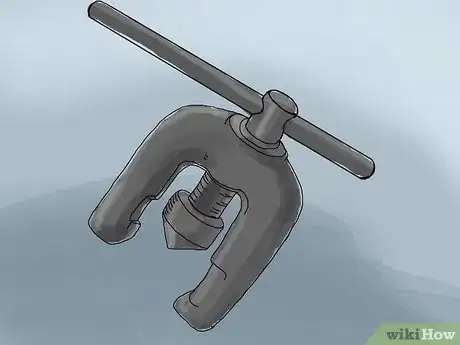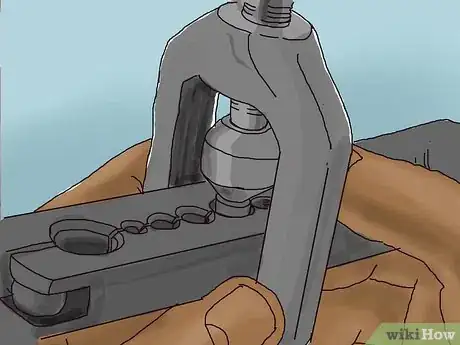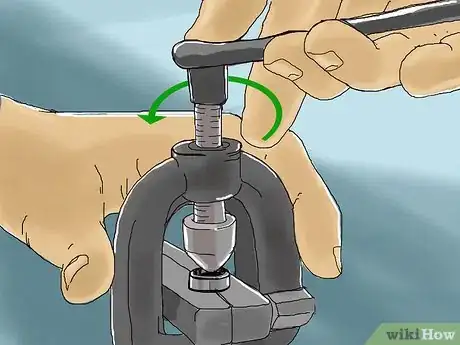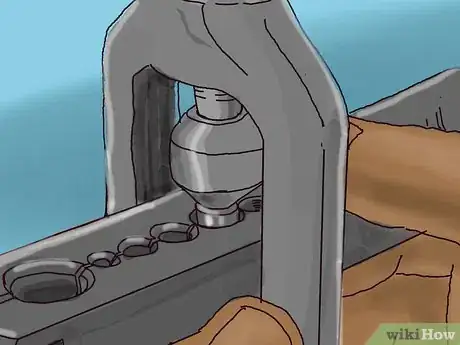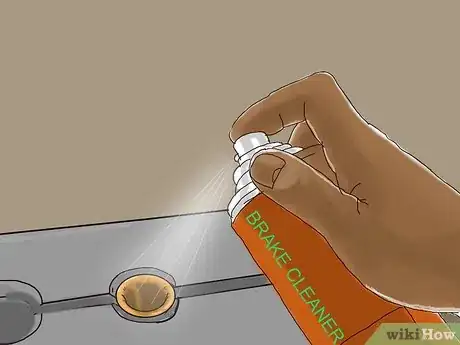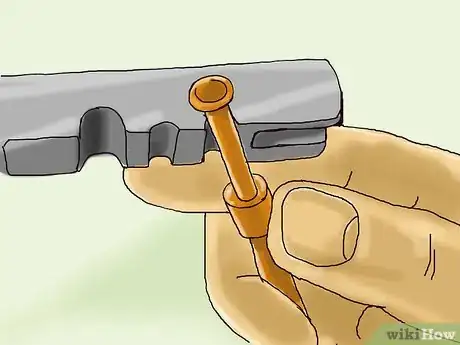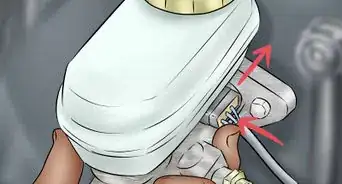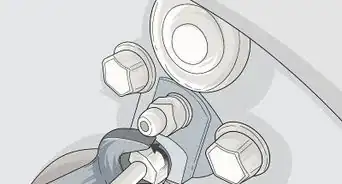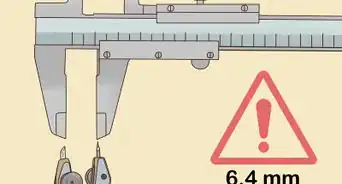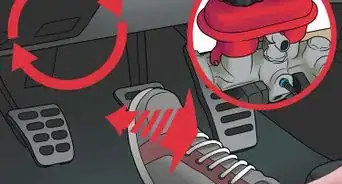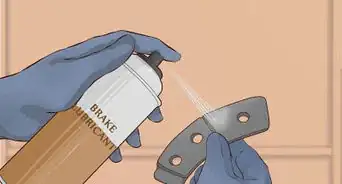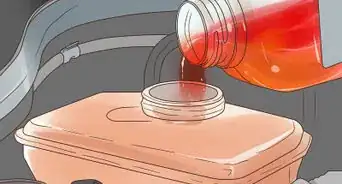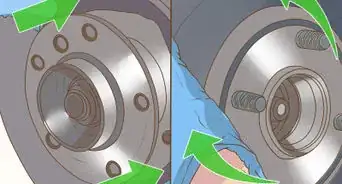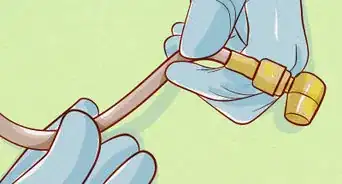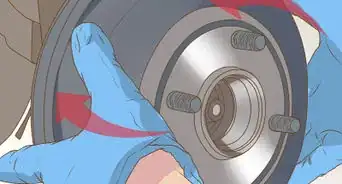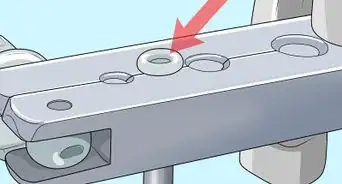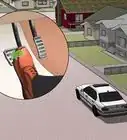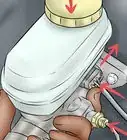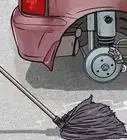X
This article was co-authored by Matthew Rava. Matthew Rava is an Auto Repair Expert and the Co-founder & Head of Marketing of Brakes to You. He specializes in auto repairs that concern brakes. Matthew earned a BS from West Chester University of Pennsylvania.
There are 7 references cited in this article, which can be found at the bottom of the page.
This article has been viewed 41,853 times.
Flaring brake lines is one of those tasks that look intimidating but is actually manageable for the home mechanic. Quite often, you can spend less buying the equipment yourself then going to a shop, and materials are cheap if you mess up the first 1-2 "practice" lines.
Steps
Method 1
Method 1 of 3:
Preparing to Build (Beginner Mechanics)
-
1Research the appropriate brake line fluid, fittings, and sizes for your vehicle in either the owner's manual or at a local auto shop. If you've never made brake lines before, you'll need to do some research to ensure you're installing the correct parts. Look in the owners manual, or bring the old brakes lines off your car and into an automobile shop.[1]
-
2Purchase a new set of brake tubes, fittings, and flare nuts with rust-resistant alloy finish. Head to the local auto shop and grab the parts necessary for your overhaul. You should be using the old parts as a guideline for the lengths and sizes, as all cars will have slightly different specifications.
- Don't forget to purchase the appropriate brake fluid as well. You'll need to fill it later.
- Again, when in doubt, do some research. The internet is filled with specific advice for each make, model, and even year of the car.
Advertisement -
3Know that you can purchase pre-fabricated lines at most auto stores to save time and energy. As long as you have the right sizes and fittings, you can buy brake lines that are already double flared. Make sure, however, that the pre-flared line will fit your car by comparing to the old lines.[2]
-
4Purchase or rent a double flaring tool kit. These devices are relatively inexpensive, and will quickly pay for themselves if you're flaring multiple lines. They come in three basic varieties:
- Manual: The cheapest, most basic option (usually under $100), these are perfect for most non-professional mechanics and hobbyists. Can even be borrowed or rented from many auto stores.
- Leverage Manual: Like manual, but require less time and force for each flair. If you restore vehicles frequently or want a complete overhaul of your lines, this may be worth the extra money. Usually several hundred dollars.
- Hydraulic: Makes quick, even flares, but is likely overkill unless your making multiple flare lines a day or need to save time (like an auto-mechanic might). Can get very expensive.[3]
-
5Purchase or borrow a tubing cutter. You need to make clean, quick cuts in the brake tubing or else your lines will be weak and prone to leaks. Tubing cutters clamp to the tube and then rotate around the tube with a small knife, slowly cutting in a circular motion instead of pushing down to cut, which could pinch the tubing. They are usually less than $30.
- In a pinch, you can use a hacksaw. If so, however, use only light pressure, focusing on cutting side-to-side instead of up and down.[4]
Advertisement
Method 2
Method 2 of 3:
Preparing Your Tubing
-
1Cut the tubing to the required length with your tubing cutter. Use your old brake lines as guides, cutting each line ahead of time so that you can visualize how much extra tubing you have (or need to buy, if you're short).
-
2Chamfer the ends of the tubes that you'll be double-flaring. "Chamfering" is simply creating a slope at the end. You want to use a file or a bench grinder to slant roughly 1/2" of the end. It will look a bit like a pencil without the lead in the center.
-
3Slide the fitting onto the line, with the threading facing the side you just cut. You want to install the fitting so that it can be screwed on over your flare. Make sure you add the fitting now, as it can be difficult to add later.
- Most lines are flared on both ends, so make sure you add two fittings, pointing opposite directions, before beginning.[5]
-
4Mount your flaring base in a vice. The long free piece of the flaring tool should be clamped firmly into a table vice, keeping it in place as you put pressure down to flair the line. The actual flaring tool should hang over the edge of the table, as the brake lines need to drop down below the tool as you work.
- You can do this free-handed if you don't have a vice, but it is much easier with one.
-
5Slide the tube into the appropriate sized hole on the flaring base so that the chamfered end barely pokes out the top. This is the part you'll be flaring, but you don't need much exposed to make your connection. 1-2mm above the flaring base should be enough.
-
6Tighten the flaring base around the tube, starting with the screws closest to your brake tube. Note how, in the video, the tube is in the far left hole of the flaring tool. Thus, the left-most screw is tightened first, keeping the tube in place, before the screw on the right is tightened.
- These only need to be hand-tightened.[6]
-
7File down the top of the tube so that it is flush with the flaring tool. You want a nice flat surface to create your connection. Make sure it has a nice flat top.
-
8Use a reaming tool to clean out the inside edge. Take a small reaming tool and insert it straight into the top of the line, rotating it with even pressure down into the tube. This will ream out the inside edge of the tube.[7]
Advertisement
Method 3
Method 3 of 3:
Double Flaring Brake Lines
-
1Adjust the height of the tube so it reaches the height of your flaring anvil. The anvil is round piece with a small rod sticking out the top. The bottom is made of two cylinders, a wide one on the bottom and a thinner one on top. You want the tubing to reach the height of this bottom section, as this is actually the height of your flair.
- Set the anvil next to your tube, loosen the clamp, and raise the tube to the same height as the "shoulders" of the anvil.
- Make sure the anvil is the same size as the tubing you're using. The hole the tube is in should be marked with measurement (ie, 3/16") that needs to match the measurement found on the bottom of the anvil (3/16").
-
2Drop a few drops of brake fluid into the line and on the top of the anvil. The only lubricating fluid you should use on a brake system is a brake fluid. Do not use motor oil. Put a few drips in the line, and a couple on top of the anvil. The top is the side with the rod poking out.[8]
-
3Insert the rod of the anvil into the brake tube. Turn the anvil upside-down and thread the rod on top into the hole in the tube. I should sit comfortably in the tube.
-
4Grab the yoke, E-shaped [flaring tool] with an adjustable conical point in the center, and clamp it to the flaring base. For now, just attach it loosely, so you can move it around still.
-
5Line up the flaring cone so that it press down squarely into the anvil. You want to take your time lining this up, as this is how the line actually gets flared. Luckily, the point is made to fit snugly into the anvil. You want to make sure, however, that it is not diagonal, off-kilter, or otherwise misplaced.
- Once you have the right angle, tighten the yoke down so that it cannot move.
-
6Tighten the flaring cone, boring into the anvil, until the anvil is flush with the base. Just turn until the bottom of the anvil sits comfortably on the flat anvil base, then unscrew it and remove the anvil. This creates your first flare.
- Don't use excessive force here, or you could damage the flare. Slow, even force is all you'll need.
-
7Without moving the yoke, bore the flaring cone directly into your tube until it is flush. Simply remove the anvil and repeat the process, tightening the cone directly into your tube. Again, you want to stop when it is flush with the top of the flaring base. Also, you again don't want to use strong or excessive force. Slow and steady is perfect.
-
8Spray down the finished lines with brake cleaner and compressed air to remove any metal shavings or dust. This will ensure your entire braking system is working properly.[9]
-
9Remove the line from the flaring tool, then install the brake lines like normal. This process is simple and easy. Keep flaring lines, or go ahead and use this one for your repair needs.
Advertisement
Warnings
- Brakes are the most important feature of vehicle safety. Make sure you test any repairs before heading onto public roads.⧼thumbs_response⧽
Advertisement
References
- ↑ https://www.youtube.com/watch?v=wK1TL35pnNc
- ↑ https://www.youtube.com/watch?v=wK1TL35pnNc
- ↑ http://knowhow.napaonline.com/how-to-make-a-double-flare-brake-line/
- ↑ http://www.eastwood.com/brake_article
- ↑ https://www.youtube.com/watch?v=wK1TL35pnNc
- ↑ http://knowhow.napaonline.com/how-to-make-a-double-flare-brake-line/
- ↑ https://www.youtube.com/watch?v=wK1TL35pnNc
- ↑ https://mechanicable.com/best-brake-line-flaring-tool/
- ↑ http://www.eastwood.com/brake_article
About This Article
Advertisement
